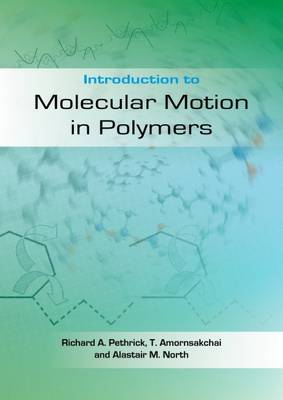A valuable primer to help students and workers understand concepts and relationships which are developed more fully in other specialist texts on polymer molecular physics, Introduction to Molecular Motion in Polymers explains how molecular movement is determined by chemical structure, then how the motion controls the physical and technological properties of polymer materials. It is based upon the fact that the physical properties of polymeric materials are very dependent on various modes of motion of the molecules, and these in turn depend on the chemical structure. The reader is thus introduced to the concepts of molecular movement in polymers and the connections with causative chemical structure on the one hand and resulting bulk physical and technological behaviour on the other. The approach is non-mathematical, but is molecularly based and will enable the reader to understand the detailed chemical and rigorous mathematical discussions of more advanced texts.The book integrates polymer chemistry with polymer physics and polymer engineering, a fusion that is so often lacking in polymer education. This interdisciplinary treatment is given first to the mechanical properties of plastics and rubbers, since these are the most important in use. Closely connected to molecular motion, and also affecting physical behaviour, is the morphology of a bulk material. This, too, is accommodated along with the treatment of glasses and rubbers. Next in importance comes electrical behaviour, and in particular dielectric or insulation uses. The book also covers acoustic behaviour, light initiated or photo-properties and diffusion phenomena. Throughout, emphasis is placed on the way that time, temperature and frequency relationships apply in a similar way to all these phenomena.
- ISBN13 9781849952729
- Publish Date 5 July 2016 (first published 17 January 2011)
- Publish Status Active
- Publish Country GB
- Imprint Whittles Publishing
- Format eBook
- Pages 224
- Language English
